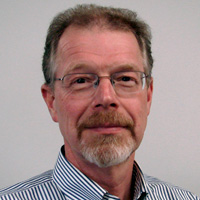I had been anticipating the trip to Borneo for years, a search for endemic bird species found only in those legendary rainforests. Headhunters had lived in the dense jungle until the 1960s. Once we were there, it was surprisingly difficult to see even brightly colored native birds. But it was disturbingly easy to see a non-native tree species that we were not seeking: the African oil palm. The remaining rainforests were just pockets in literally thousands of square miles of oil palm plantations. And more forest was being clear-cut.
Back home, I learned that almost 40 percent of the world's vegetable oil is squeezed out of the palm fruit. The United States is the fourth-largest consumer of palm oil from Malaysia, importing over 1 million tons in 2012. It takes almost 1 million acres of oil palms, 1 million acres of former rainforest, to produce those million tons of palm oil.
In the U.S., most palm oil is used in food; in shortening, margarine, as a cocoa butter substitute in cheap chocolate. Rummaging through the cupboard, I found the palm oil labels on packages of crackers and biscuits. "Oh no", I thought, "not another ingredient to check for." But yes, I will have to make the effort to exercise my power as a consumer to make informed choices. And there are alternatives -- products that use canola and sunflower seed oils, and good dark chocolate.
I am left haunted by the devastating and absolute loss of an incredibly unique habitat. Primary rainforest in Borneo supports 1,200 trees species and over 220 bird species. Palm plantations support one introduced tree and about 12 bird species.
My voyage of discovery turned into a jarring reminder that not only do we have a responsibility to act to protect what is left of the marvelous habitats that sustain this planet, but that we can act, using our power as consumers. Ignorance of the eradication of this planet's biodiversity will not be an excuse when we are judged by future generations.
With a Perspective, I am Ian Austin.
